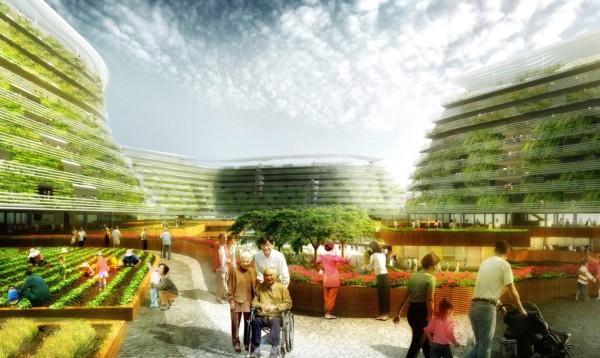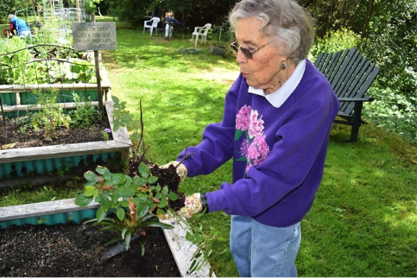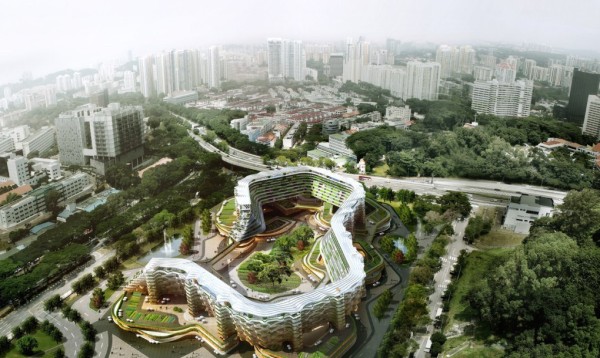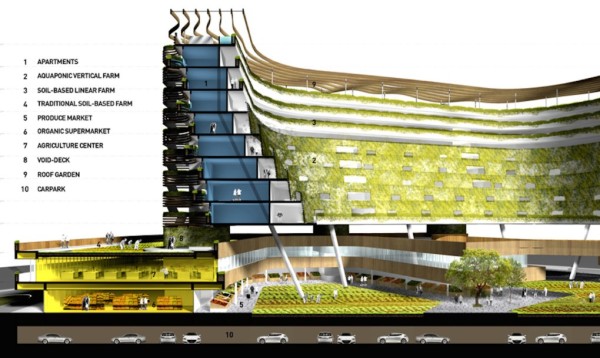The Future of Senior Housing is the Green
 With an aging population of Baby Boomers in the USA, and aging populations in Japan and around the world, the need for senior housing is growing. That often means new construction, and in many cases developer’s are choosing to develop senior housing not only with green building practices, but also with sustainable socioeconomic factors such as combining senior housing with farming, youth rental agreements and childcare facilities. Green choices add to the health and well being of residents and sustainable, community factors add to the quality of life and happiness of residents.
With an aging population of Baby Boomers in the USA, and aging populations in Japan and around the world, the need for senior housing is growing. That often means new construction, and in many cases developer’s are choosing to develop senior housing not only with green building practices, but also with sustainable socioeconomic factors such as combining senior housing with farming, youth rental agreements and childcare facilities. Green choices add to the health and well being of residents and sustainable, community factors add to the quality of life and happiness of residents.
What makes a senior housing facility green?
Sustainable Site – Choosing the place the building on the site to reduce disturbances to the natural habitat and soils.
Water efficiency – Reducing the amount of potable water that gets used in the building and adding water saving fixtures and features like greywater systems.
Energy efficiency – Reducing the amount of energy used in the building and attempting to maximize the use of renewable energy such as solar.
Materials & Resources – Reducing the amount of harvested resources from forests or mines in building construction and using salvaged materials or materials made from post-consumer waste and recycling.
Indoor environmental air-quality – Improve the indoor air quality of a building by providing proper ventilation and reducing the amount of building materials that have been treated with chemicals that continue to off-gas long after the building is constructed.
Innovation in design – Embellishing buildings with good design, innovation and art.
Walkability – Choosing a site that is close to other amenities so that residents can continue a healthy lifestyle of walking to the store, a cafe, or library.
Community/ Healthy Living Style – Fostering community and promoting activities that bring seniors together such as gardening, farming, exercise, dance, cooking and many other forms of intergenerational interaction.
In Washington State, senior facilities are already beginning to focus on sustainability for their residents. The Green Village Retirement community in Federal Way, offers eco-friendly choices to it’s residents and promotes a natural way of living. They recycle, maintain a large lush grounds for residents to enjoy and provide individual gardens to each of the residents to promote health and wellness.
“From the beginning, we have focused on creating a breathtaking natural setting, and ensuring that our practices are as eco-friendly as possible – offering sustainability, and promoting a healthy green lifestyle.”
In Japan, planning for senior housing is a new concept, one that strives to incorporate seniors into multi-generational living. Senior housing is found in newer developments and construction. For example, to promote urban development to help Japan fulfill its commitment to tackling challenges for the future of the world Kashiwa-no-ha Smart City was formulated. The entire city will focus on energy savings and conservation, urban farming, CO2 Reduction, renewable energy, and sustainable design. Kashiwa-no-ha promotes health and wellness programs, the use of technology for monitoring health and health stations for residents to primarily focus on preventative medicine.
In 2016 Inhabitat reported on a visionary Homefarm concept that takes the best of urban sustainability and design and combines it with senior housing.
“Architecture firm SPARK unveiled Homefarm, a visionary design that tackles food security and elder care challenges in one fell swoop. Presented at the World Architecture Festival, the conceptual proposal combines urban retirement housing with vertical urban farming into a live-farm typology that’s beautiful, productive, and empowering for its residents. In addition to its aquaponic vertical farming system, the eco-conscious Homefarm also includes a roof garden, fruits and vegetable marketplace, and biomass power plant.”

This concept was in part developed to address Singapore’s growing aging population, and includes apartments up to four bedrooms to allow for the tradition of multi-generational housing. The farms are to help the seniors maintain an active life, where they can part a community, and protect against depression, dementia as well as promote self-esteem and worth. “Spark director Stephen Pimbley told Dezeen. The vertical farm also addresses food security in a country where 90 percent of food is imported. Spark hopes to build the first Homefarm in Kuala Lumpur by 2018, with plans to build additional units in Singapore and other Asian cities.”

Another trend in senior housing in both the US and Europe is to invite college aged students to live with seniors to eliminate or reduce their housing fees. Many students are struggling to get by, and having subsidized housing and interaction with seniors, they report is a huge benefit. in NYC, Cleveland and many countries in Europe such as Finland.
Cohousing is another sustainable green model for seniors. LivingCohusing SL put this conceptual video together in Spanish to show the viability of leaving a solitary life of aging for a community life. Very cool!
For more information about Green Living or Green Senior Living contact Eva Otto at eva@infinitiRED.com.
